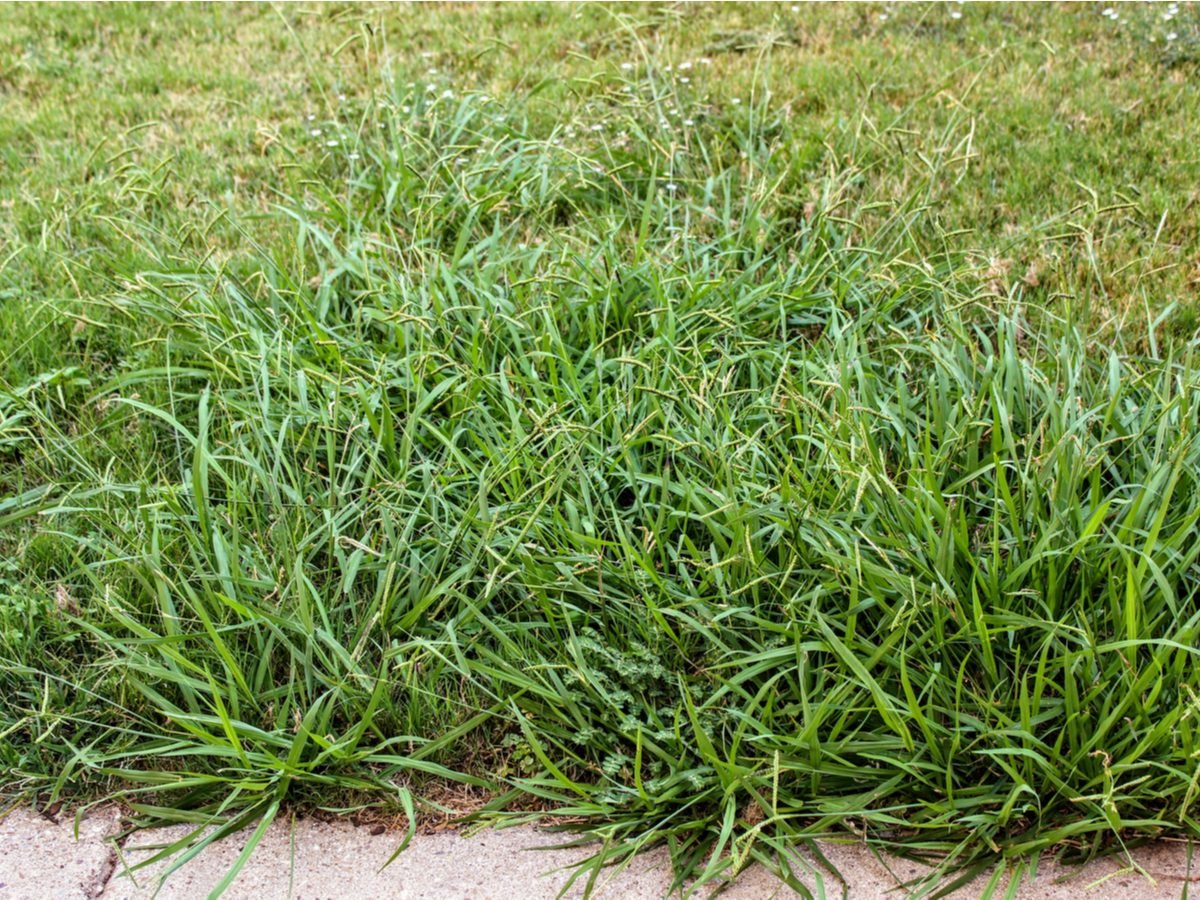
How to get rid of crabgrass
Crabgrass is a tough opponent, but with a lawn spreader, a pump sprayer and a few turf products you can get rid of crabgrass in the spring and control it throughout the summer.
Tools required:
- Broadcast spreader
- Garden rake
- Pump sprayer
- Safety glasses
- Spade
- Work gloves
Materials required:
- Grass seed
- Nonselective herbicide
- Postemergent herbicide
- Pre-emergent herbicide
Crabgrass weed killer
The best weapon in your quest to learn how to get rid of crabgrass is pre-emergence herbicide (also called crabgrass preventer). Apply it in the spring before the crabgrass seeds sprout. The granular herbicide works by creating a chemical barrier at the surface of the soil. As the seeds germinate, they take in the herbicide and die.
If you have a particularly bad crabgrass problem, one application per season may not be enough. Chances are the crabgrass will germinate and spring up later in the summer. Pre-emergence herbicides have a lifespan of about 50 days after application (check the label; product lifespans vary). Once the chemical barrier breaks down, dormant crabgrass seeds, which can remain viable for years, may germinate into seedlings. Even if you successfully rid your property of crabgrass, if your yard butts up against property that has a thriving crabgrass crop, you can bet thousands of seeds will blow onto your lawn, just when your herbicide is calling it quits.
You don’t need to reapply herbicide to your whole yard. Concentrate your re-application efforts on areas where crabgrass thrives, like the edges of driveways and walking paths. These spots tend to absorb more heat, warming the soil and making for prime crabgrass locations.
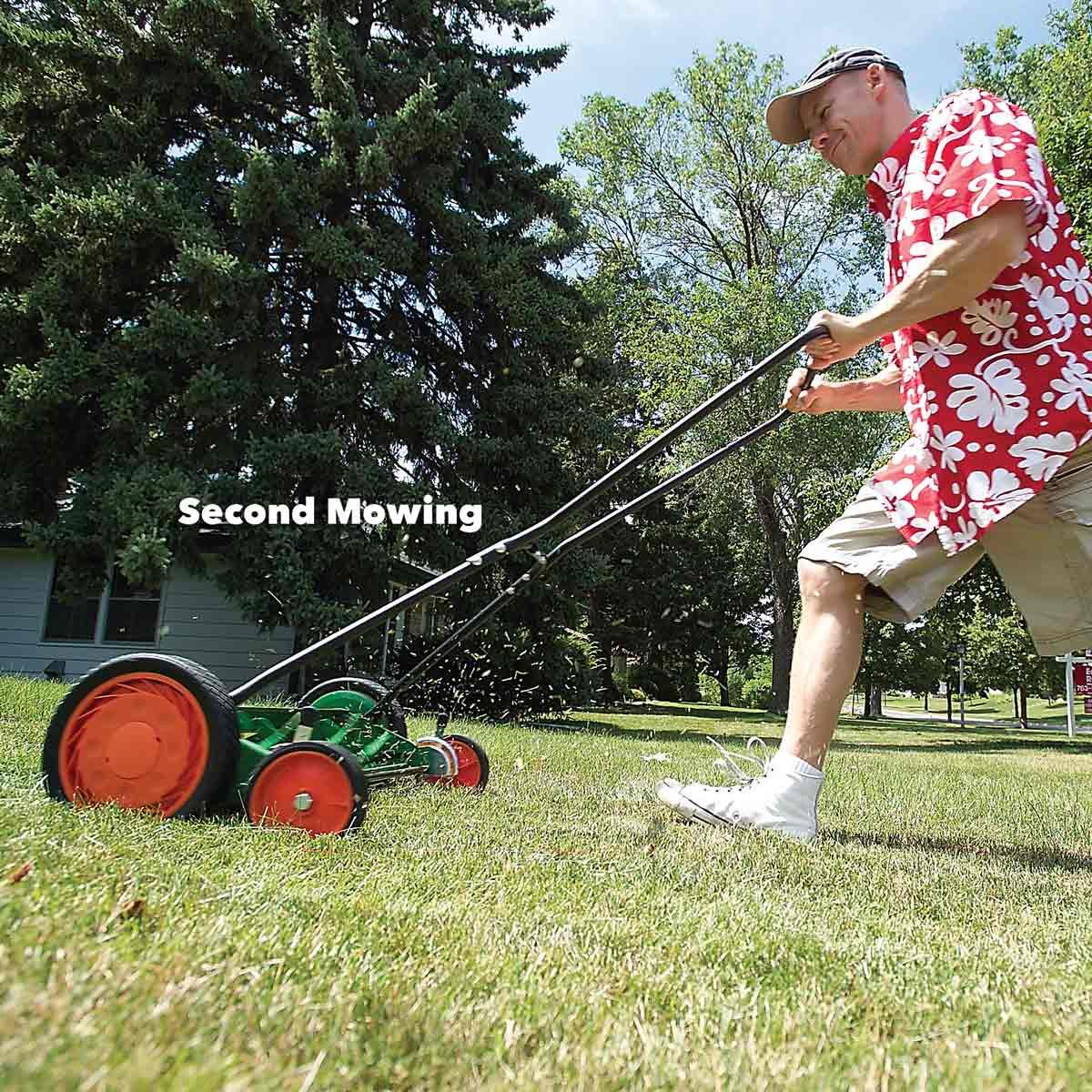
Step 1: Wait for your second spring mowing
Let lawn growth determine the best time for applying pre-emergence herbicide for getting rid of crabgrass. Apply it after your second regular mowing in the spring.
(This is when you should start mowing your lawn in the spring.)
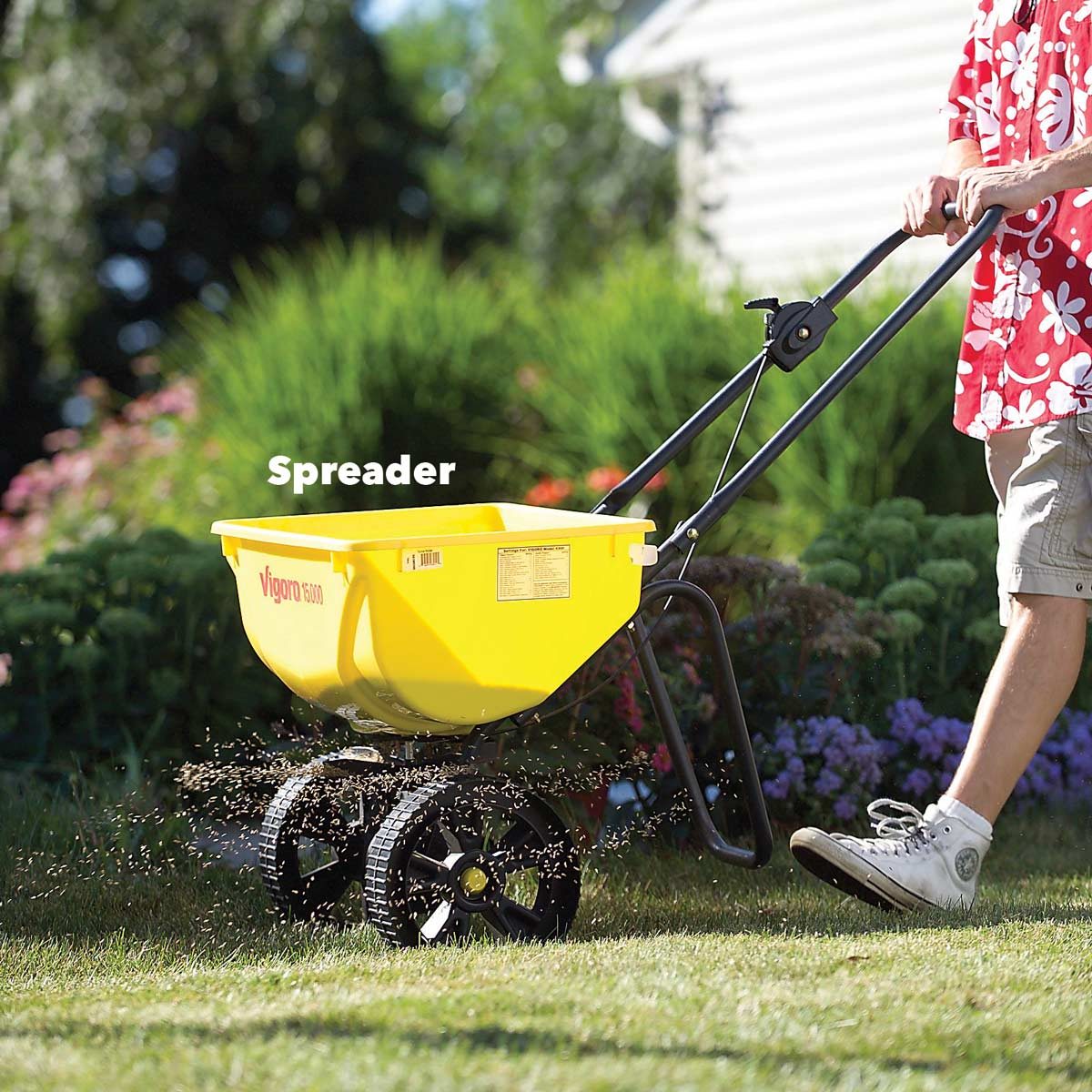
Step 2: Apply pre-emergence herbicide
Apply crabgrass pre-emergence granules with a spreader, especially around driveways and walks and also alongside the neighbour’s crabgrass-infested yard.
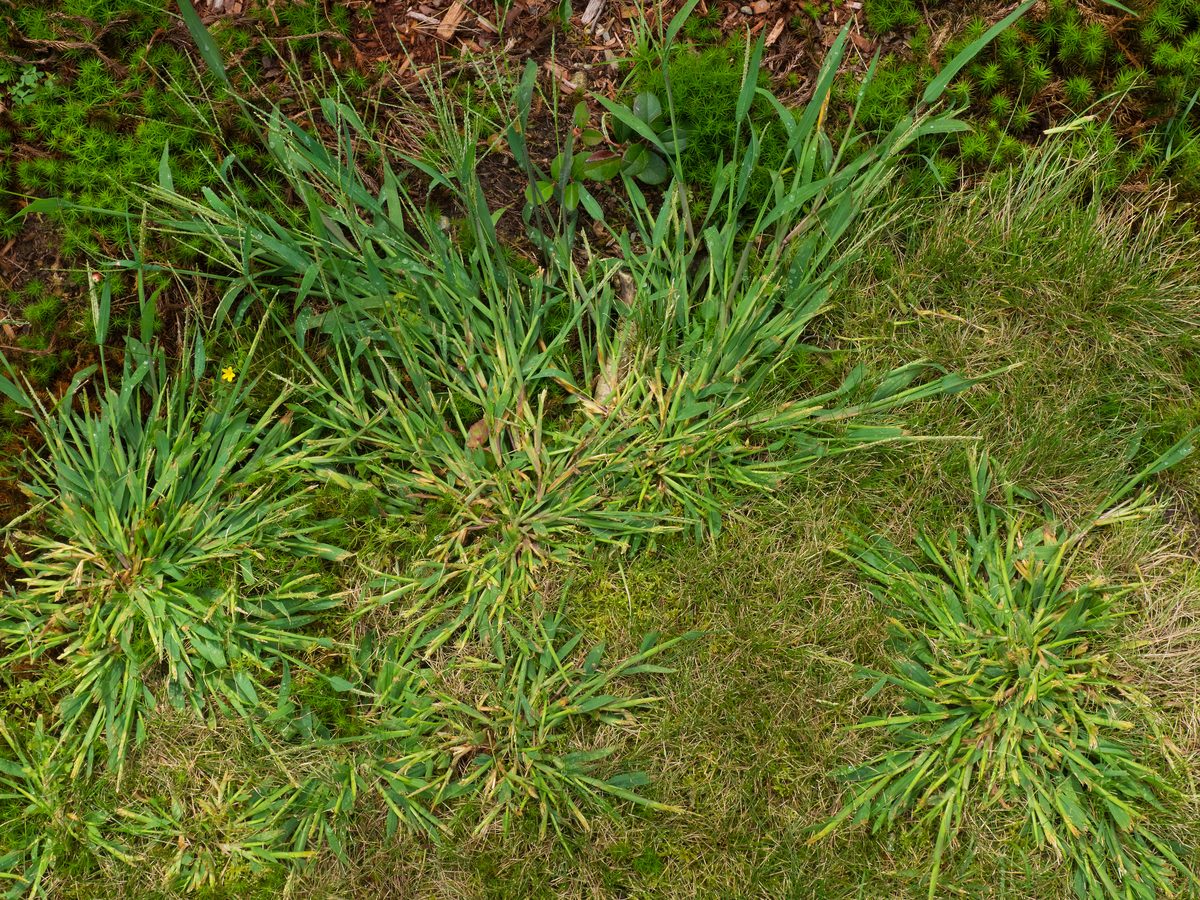
Step 3: Use fertilizer with crabgrass preventer added to it
Use a fertilizer with crabgrass preventer added to it to save time. These combination products are readily available in the spring.
Apply the crabgrass preventer/fertilizer combo just before it rains to work both the fertilizer and the herbicide into the soil. The fertilizer will help thicken the turf. Thicker turf helps to squeeze out crabgrass plants missed by the herbicide.
Be sure to apply the product at the right time, between the second and third mowings of the year, when the soil reaches about 11 C. Apply too early and micro-organisms and natural processes in the soil break down the herbicide. By the time it’s needed, much of the product has lost its potency. Apply too late and you’ve missed the early stage of germination when the herbicide works.
Here’s what you need to know about lawn mower oil.
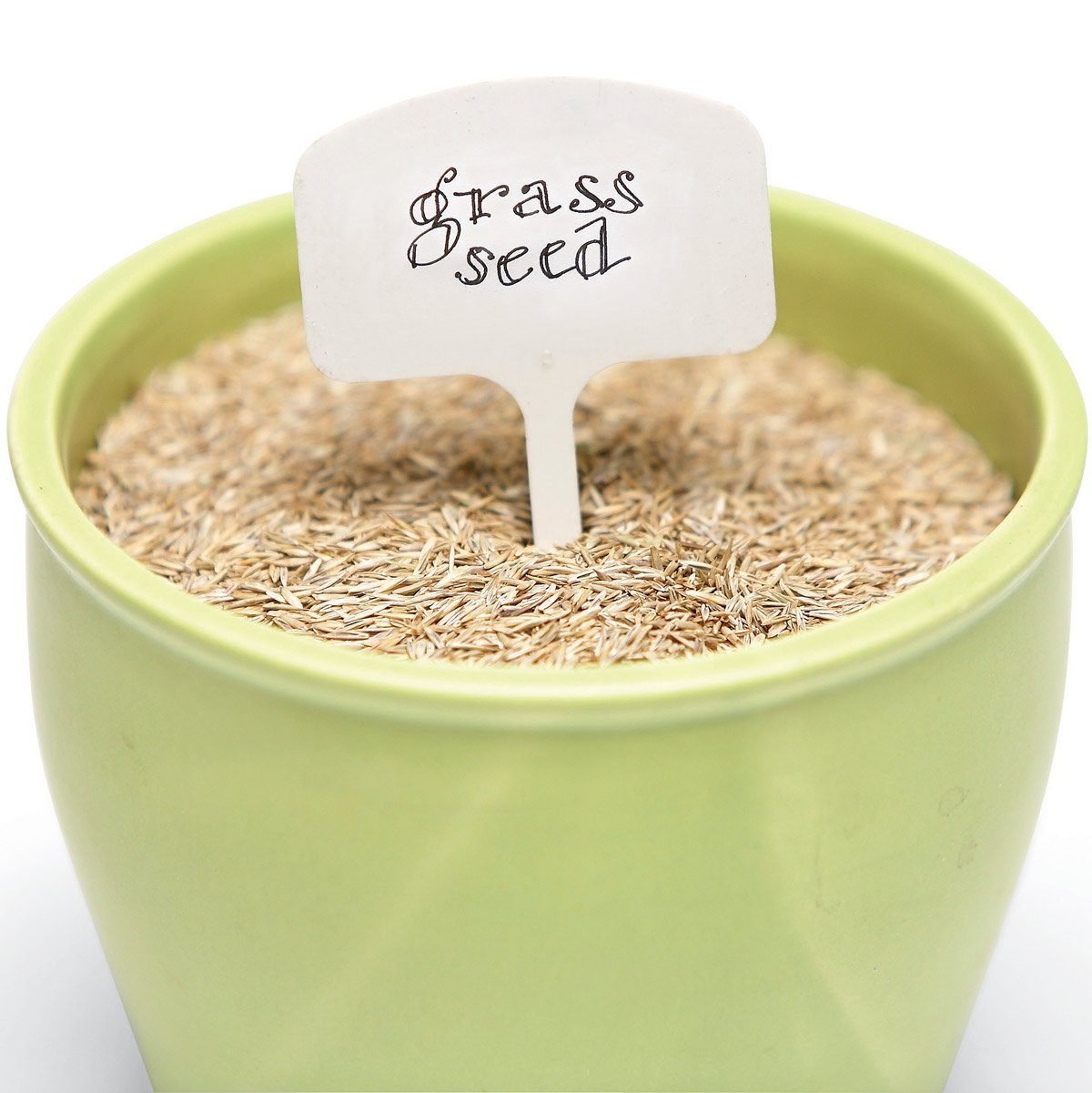
Step 4: Check the key ingredients in crabgrass preventers
Look carefully at the ingredients panel for dithiopyr, prodiamine or pendimethalin to determine how to kill crabgrass. These active ingredients will kill crabgrass in most regions and in many different kinds of turf.
Ask your local extension service which chemicals are best crabgrass preventers for your area and turf species.
Don’t seed if you treat your lawn with a pre-emergent. Herbicides that kill crabgrass will also kill desirable grasses such as bluegrass, ryegrass and fescue.
Control crabgrass in the spring and do your seeding in late summer or early fall, making sure to keep these two chores at least eight weeks apart. There are a few pre-emergent herbicides, such as Tupersan, that are compatible with newly established seed, but they’re expensive and can be hard to find.
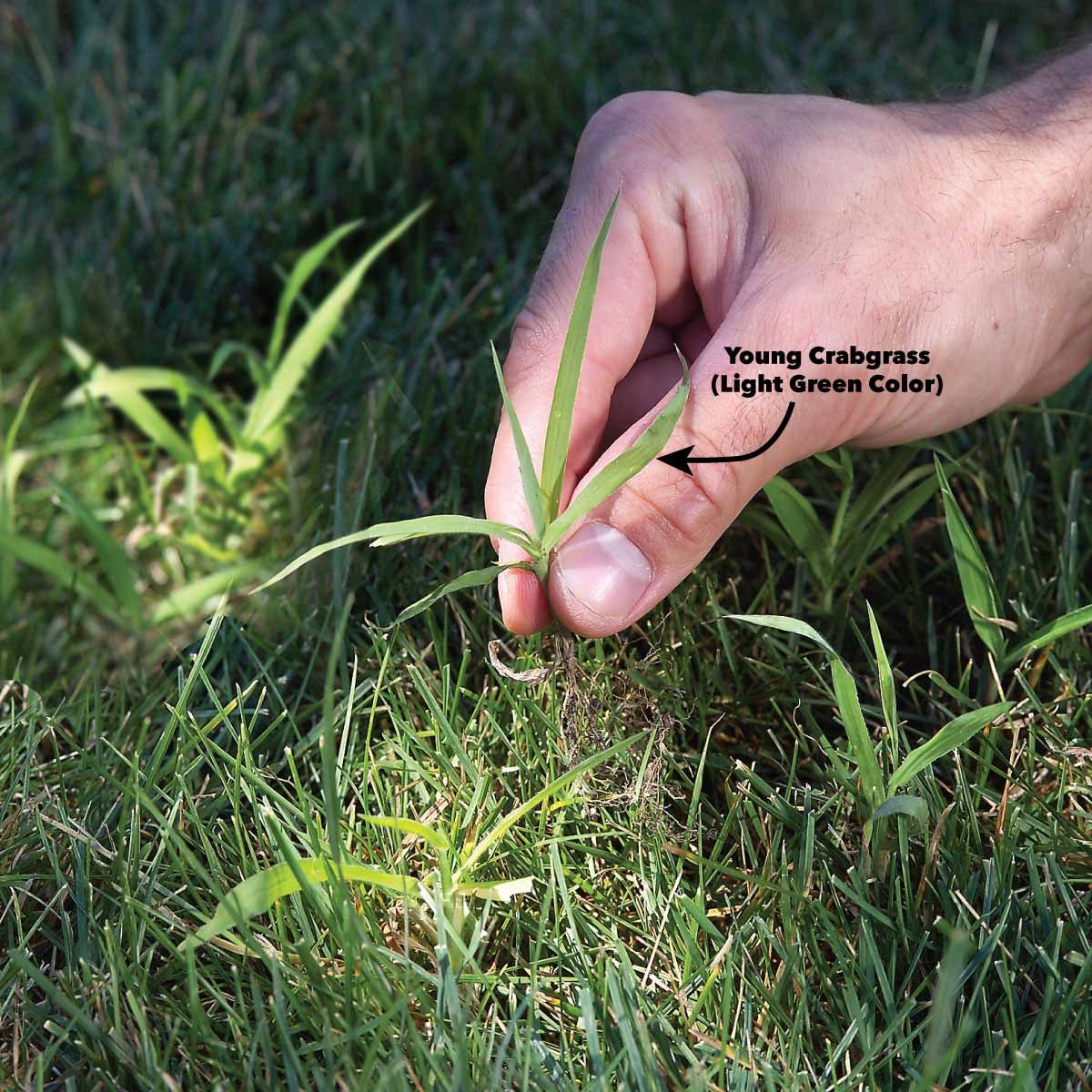
Step 5: Recognize and remove crabgrass early
Pull out crabgrass as soon as you spot it. Young plants leave only a small hole in your turf, which desirable grass types will quickly fill.
Look for light green grass blades thickening up your Kentucky Blue once your lawn’s been growing for a couple months. Before you think your lawn is having an exceptional season, think again: It’s likely to be young crabgrass.
Carefully pull out the young crabgrass shoots. Pulling at this early stage is a surprisingly effective way to get rid of crabgrass. Young crabgrass plants perfect for pulling have two to four sets of leaves but no splayed seed heads. But if the weed has pushed up three or four rows of leaves, inspect it carefully before you snatch it.
Find out more things you should never do to your lawn.
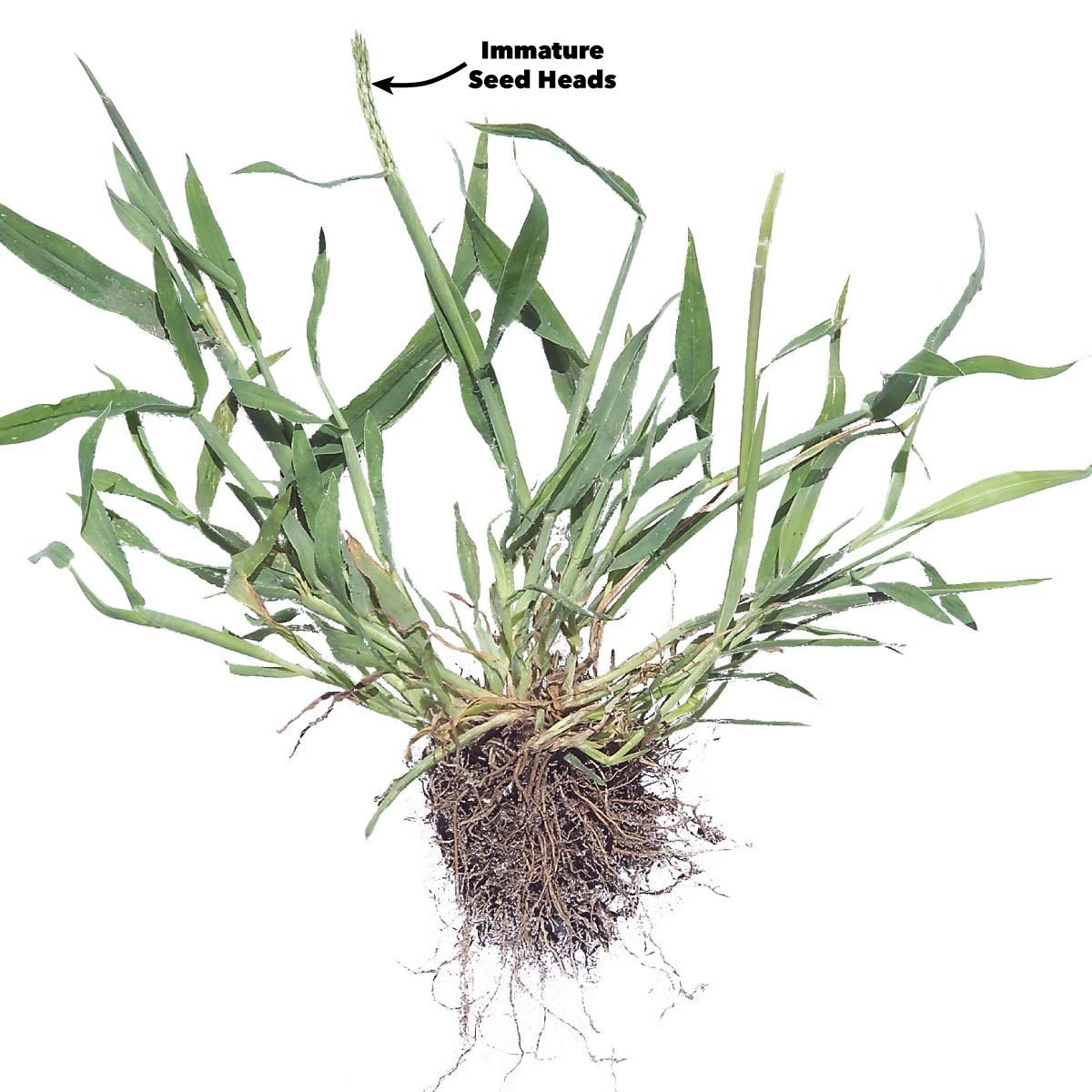
Step 6: Look for immature crabgrass seed heads
Inspect your yard carefully for slender, green seed heads that are still closed and folded up against the leaves of the plant. Carefully pull these out, too. Immature crabgrass plants have tight, green seed heads. They’re more difficult to remove, but it’s still OK to pull them.
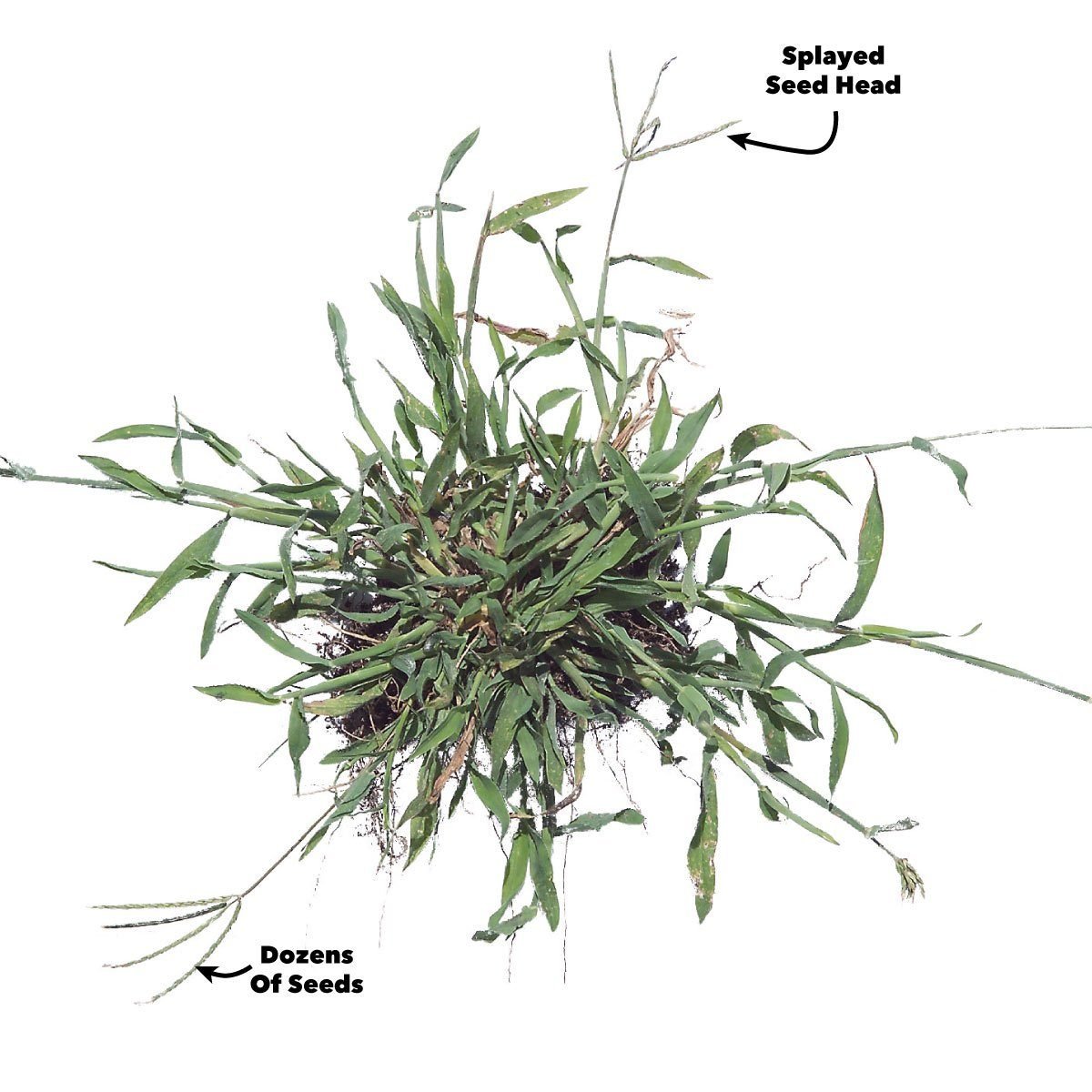
Step 7: Mature crabgrass seed heads
Keep your eyes peeled for seed head tines spread out like a fork, and leave them alone. Fully mature crabgrass has splayed seed heads. Otherwise, you’ll scatter scads of seeds right over that nice big hole you’ve just created by removing the mature weed. You might as well be trying to cultivate new crabgrass! Pulling will leave a big hole in the lawn and spread up to 5,000 seeds per plant.
Wait for the plant to die in the fall. Then hit the area next spring with pre-emergence granules to keep the seeds from sprouting. With good lawn care practices, you’ll soon crowd out those fallen crabgrass seeds.
Don’t miss these other genius gardening hacks.
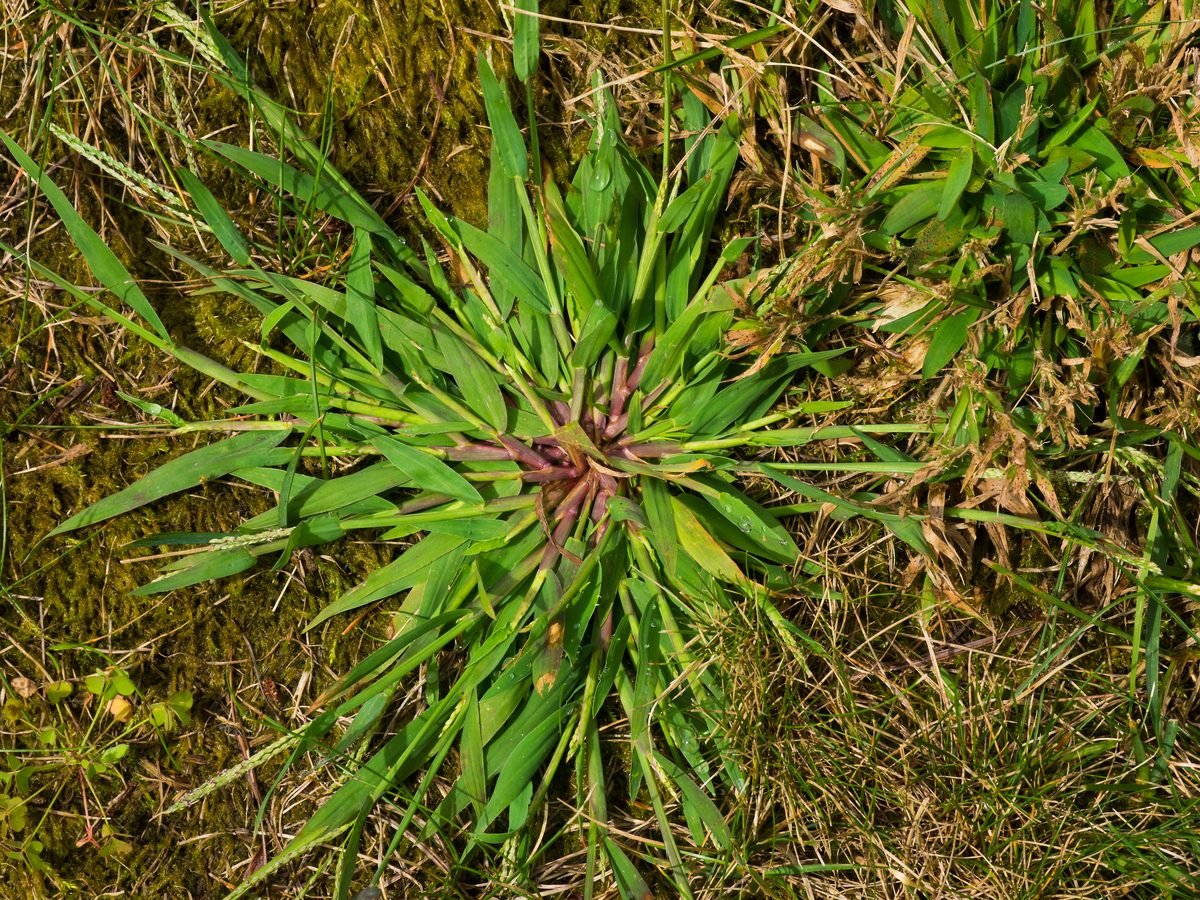
Step 8: Spray stubborn patches of crabgrass
Spray post-emergence herbicide directly on crabgrass after it has sprouted. Pulling is equally effective, but if the roots are deeply embedded in your lawn, it may be tough to pull them out without pulling grass chunks, too. It’s not worth spraying a post-emergence product on crabgrass that has gone to seed. It takes about two weeks for the herbicide to work, which is about how long it takes the plant to finish its seeding process. If it has gone to seed, you’re better off waiting for next spring and applying a pre-emergence product then.
Post-emergence herbicides are most effective when the soil is moist and the plants are dry. Read the post-emergent crabgrass killer label for specific instructions. Typically you apply it with a hand pump sprayer. It’s best to apply it on a hot day when there’s low wind. If temperatures are too low, the product may be ineffective. Unless the crabgrass is young, you’ll probably have to reapply post-emergent crabgrass killer a few days later (according to the label) to kill the plant.
After post-emergence application(s), keep an eye on the treated area. In extremely dry conditions, water two days after the application to aid absorption. If your grass near the treated area is turning brown, you probably were a little heavy-handed. Soak the damaged area with water to dilute the chemical and avoid further damage. Also, be on the lookout for new crabgrass sprouts. These will require another herbicide treatment, or if there aren’t too many, simply pull them. Be sure to seed these areas in the fall.
Crabgrass in the fall. Don’t waste your money on a post-emergence herbicide in the fall as a route on how to kill crabgrass, when the temperatures are falling. The herbicide won’t be effective and the plant will soon die anyway.
Check out more ways to prep your lawn and garden in the fall.
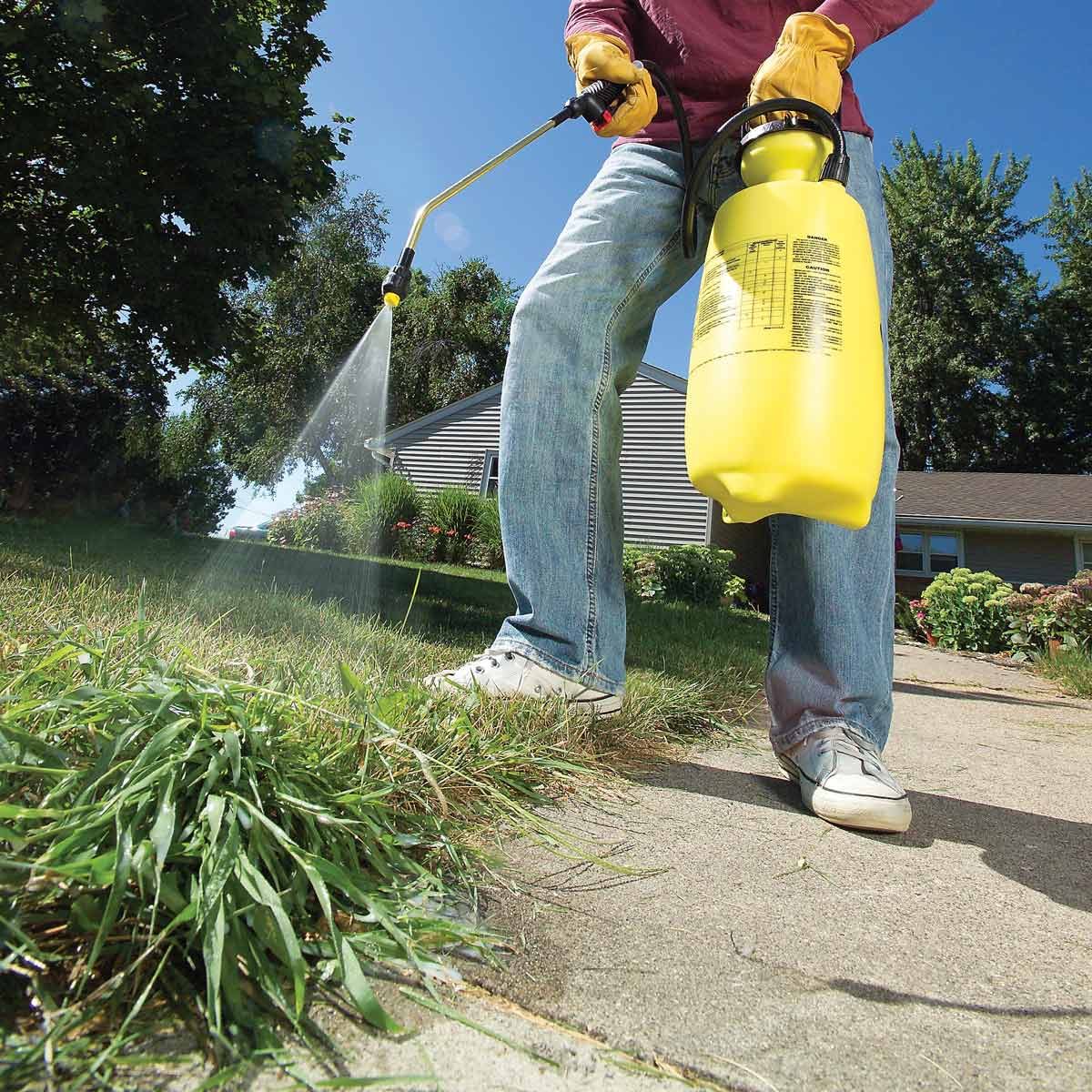
Step 9: Kill immature crabgrass patches with herbicide
Lightly mist masses of immature crabgrass with a post-emergence herbicide. Usually, it’s too embedded to pull without yanking lots of your desirable grass with it.
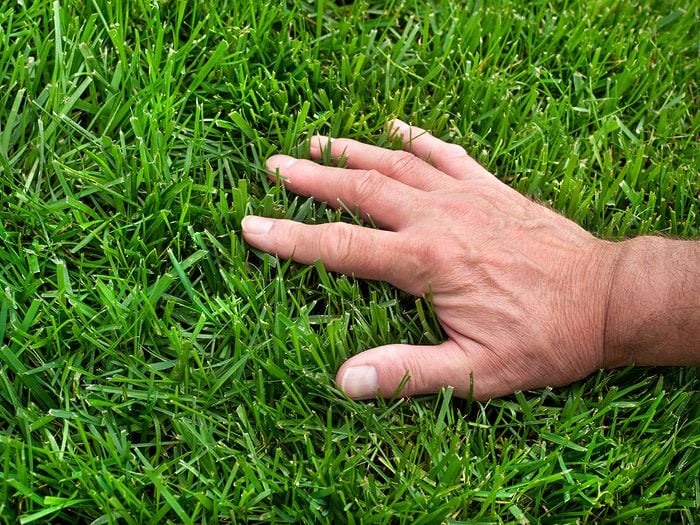
Step 10: Fight crabgrass with a healthy lawn
Fight crabgrass most effectively by shading it out with a thick, healthy lawn. A thick lawn provides a dark canopy of grass blades over the seeds, so they won’t sprout.
Thoroughly water your lawn once a week to encourage the grass’s root system to go deeper, making the whole lawn more hardy and heat tolerant. Avoid short, frequent waterings. These “sips” will promote a shallow, weaker root system in your lawn.
Keep your lawn mowed to a height of 2 to 3 inches. Mowing it shorter than 2 inches will reduce the grass’s vitality and give weeds a chance to move in. Be sure to keep your lawn mower blades sharp so they won’t tear the grass. Leave grass clippings on the lawn as a natural fertilizer. (Learn the most efficient way to mow your lawn.)
Reduce compaction. Weeds thrive in areas where compacted soil deprives the grass roots of the air and water circulation they need. If your yard is prone to compaction, rent and run an aerator over it every other year, especially if your soil contains a lot of clay.
Avoid lawn fertilizers that say “quick green-up” on the label. These have excessive nitrogen ingredients that will actually weaken your lawn over time, making it more susceptible to weeds. Instead, select a fertilizer product with half of its nitrogen in a slow-release form. For a 1,000-sq.-ft. lawn, use less than 3 lbs. of nitrogen annually.
Reseed as needed. Weed-damaged or thin areas should be seeded (sometimes called “overseeded”) in the fall, when the days are warm, the nights are cool and you have dew in the mornings.
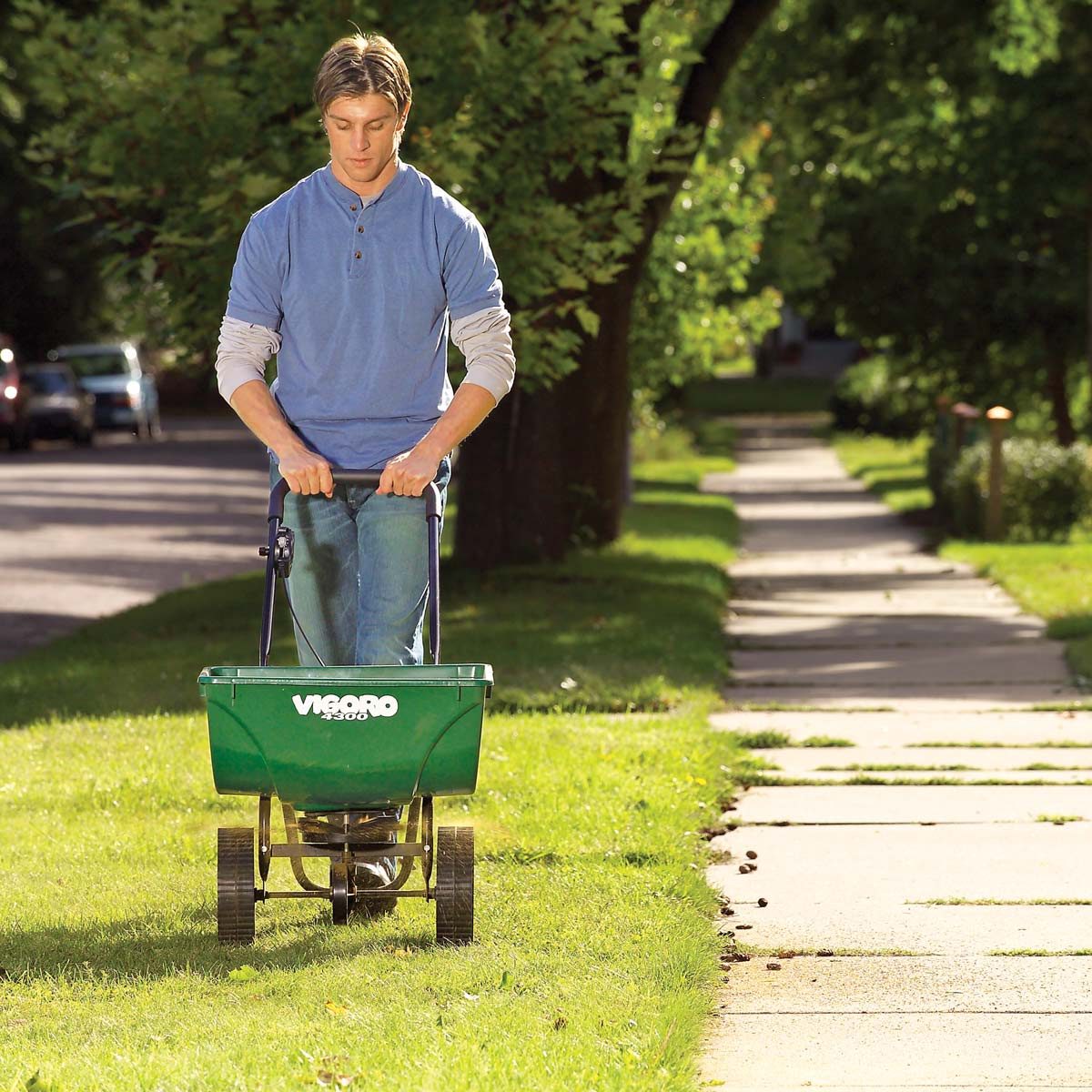
Step 11: Apply a double dose of herbicide to crabgrass hotspots
Limit crabgrass growth in areas like driveways, sidewalks and curbs or on south-facing banks by doing a targeted double treatment when necessary. These areas absorb a lot of heat during the summer months, which makes them more susceptible to crabgrass.
After you’ve treated your entire lawn, go back and make another pass about 6 to 8 ft. wide, along hotspot areas (and make sure to sweep it off hard surfaces afterward). This will help keep crabgrass from taking hold.
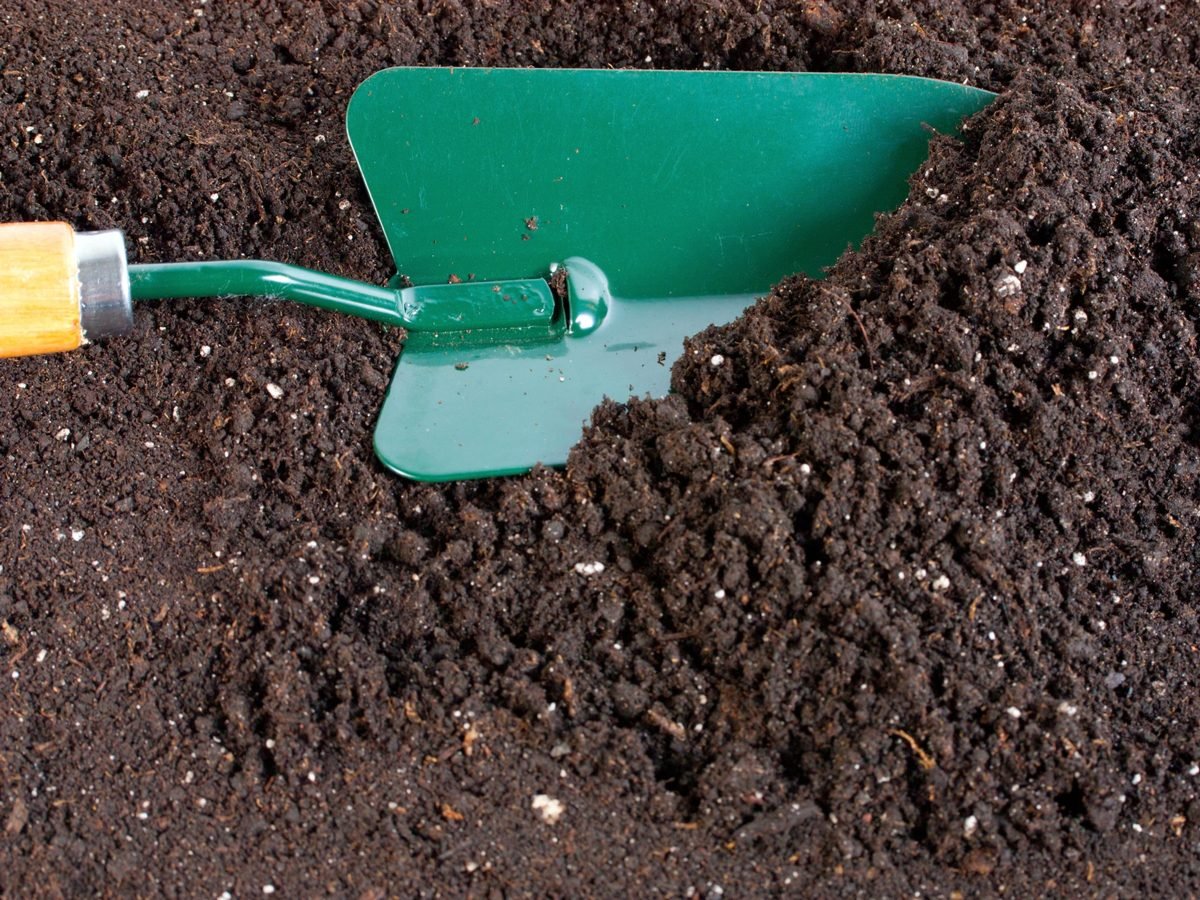
Step 12: If all else fails, kill everything and start over
Admit defeat when your lawn only has 30 to 40 per cent desirable grass left in a given area and the rest is lost to crabgrass and other weeds. If you’ve tried all options on how to kill crabgrass without success, it’s time to start over.
Begin by killing all the vegetation. On a low-wind day, apply a nonselective herbicide that is approved for lawn use. Follow the label directions exactly. Depending on the product, weeds and grass will die and dry up in five to 14 days following application. Then re-building your lawn can proceed.
Make sure you never plant these flowers in your garden.
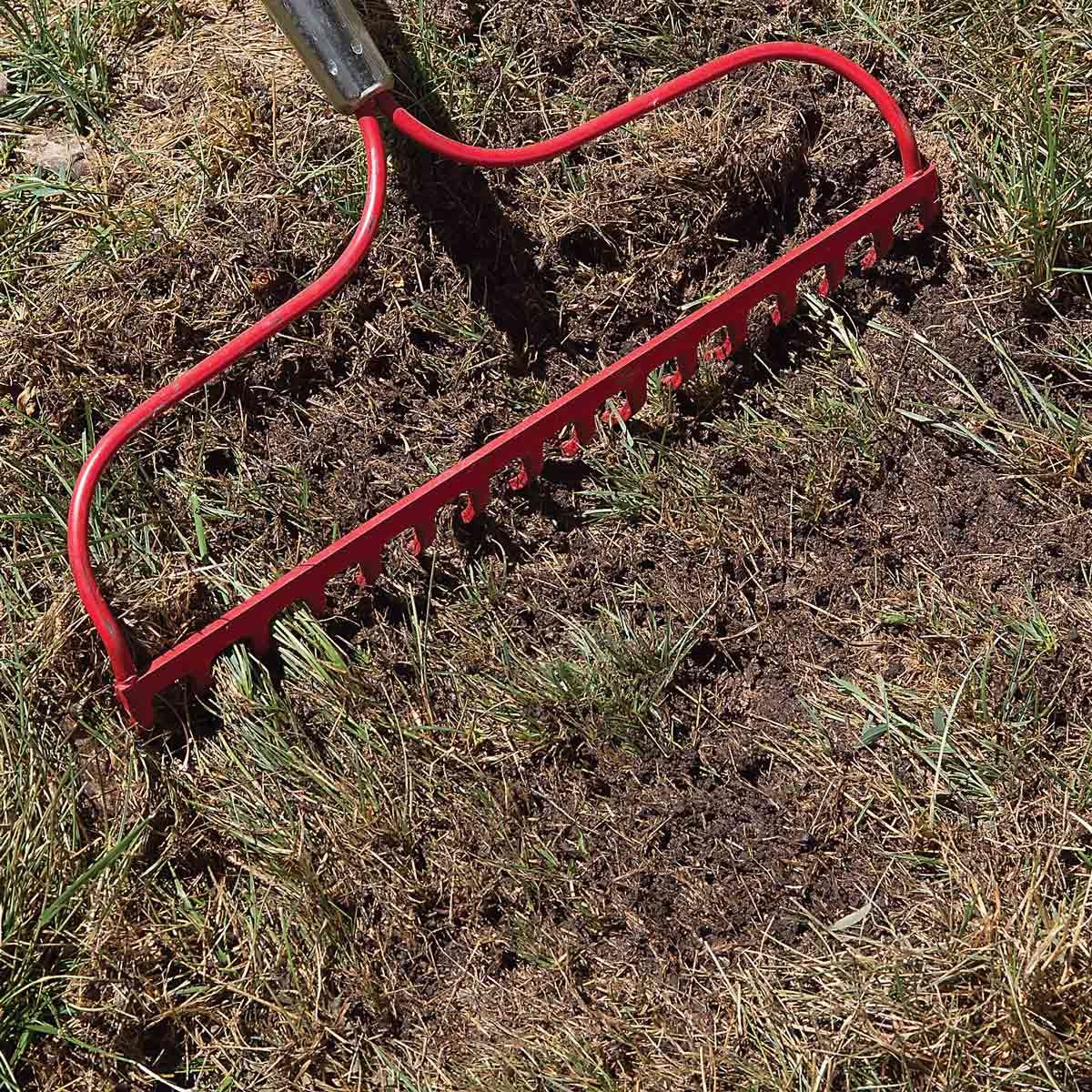
Step 13: Expose bare soil
Kill off patches of lawn with non selective herbicide in the fall if more than half the area is weeds.
When it’s safe to replant (check the herbicide label), thoroughly soak the area to give your new grass its best chance for a good start.
Check your watering depth by pushing a spade into the ground and pulling it back to get a deep view of the soil. If the soil is moist to a depth of 6 to 8 inches, you’re ready.
Rake off dead grass and thatch to bare the soil.
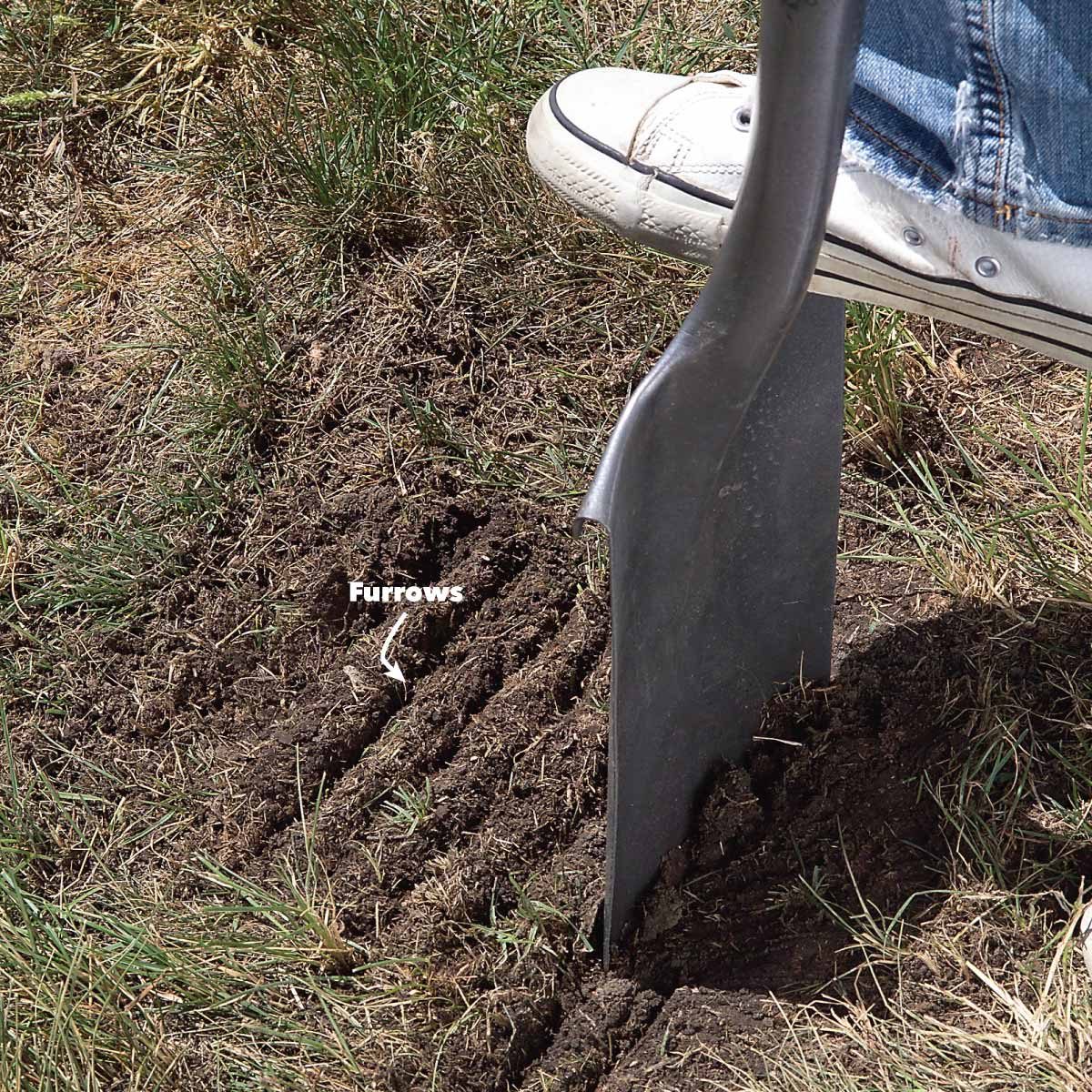
Step 14: Furrow the dirt
Use a spade for seeding patchy bare areas and turf-free areas up to about 8 ft. square. It’s effective, although it would be slow and tedious on areas that are much larger.
Scuff up the dead vegetation with a rake and, using a spade, make 1/4-inch-deep furrows about 2 inches apart using a flat shovel. This will give your seeds a better chance to settle into the moist soil.
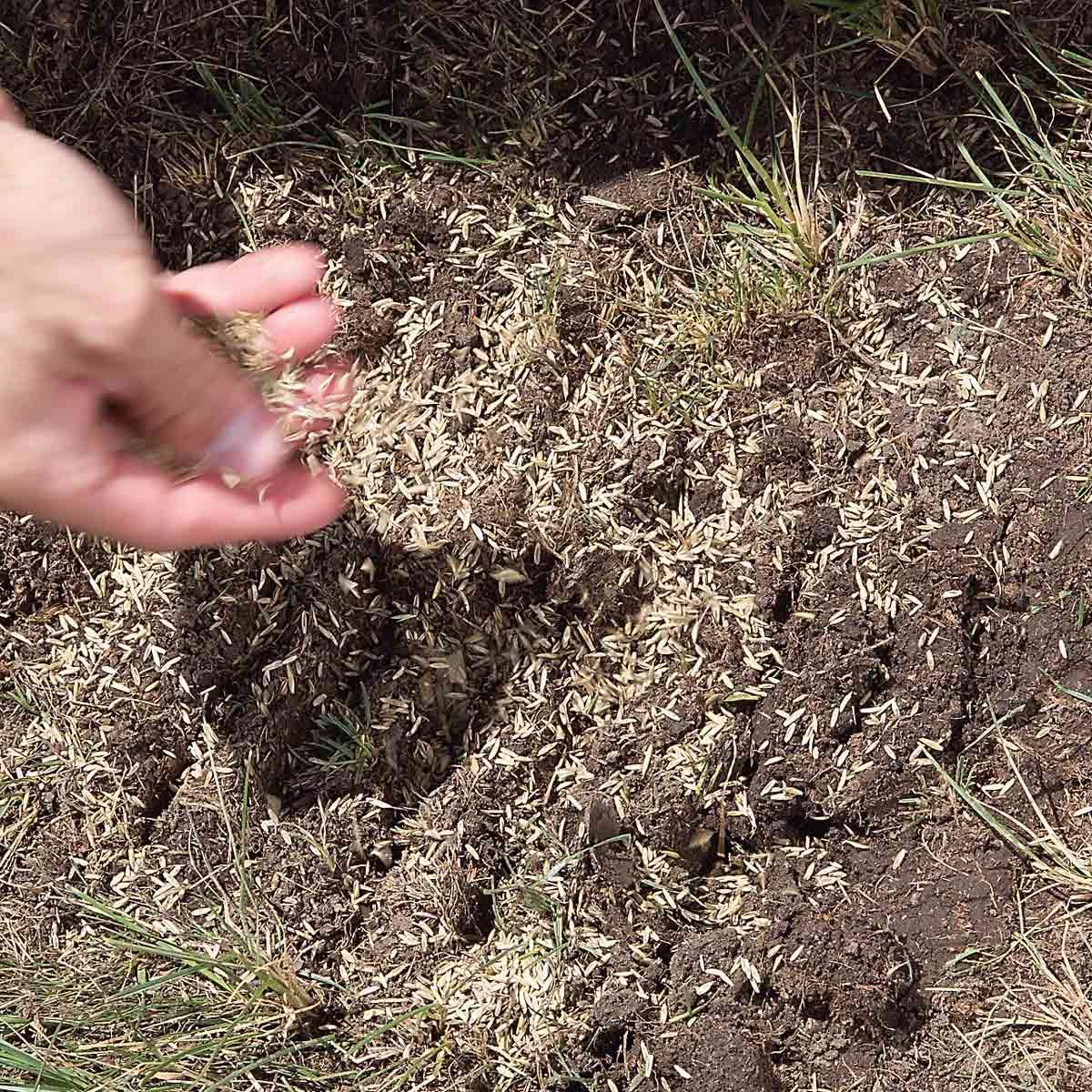
Step 15: Seed
Broadcast your grass seed, then flip a rake upside down and knock the seeds into the furrows. These furrows ensure that the seeds will make good contact with soil; they provide some moisture-retaining shelter as well.
Be sure to keep the seeds and soil moist to the touch until the grass becomes established.
Continue to baby your new grass until after its first mowing.
Mow the new grass when it’s 3-1/2 to 4 inches high. Do not apply crabgrass preventer to freshly planted areas.
Discover seven eco-friendly lawn care tips worth trying.
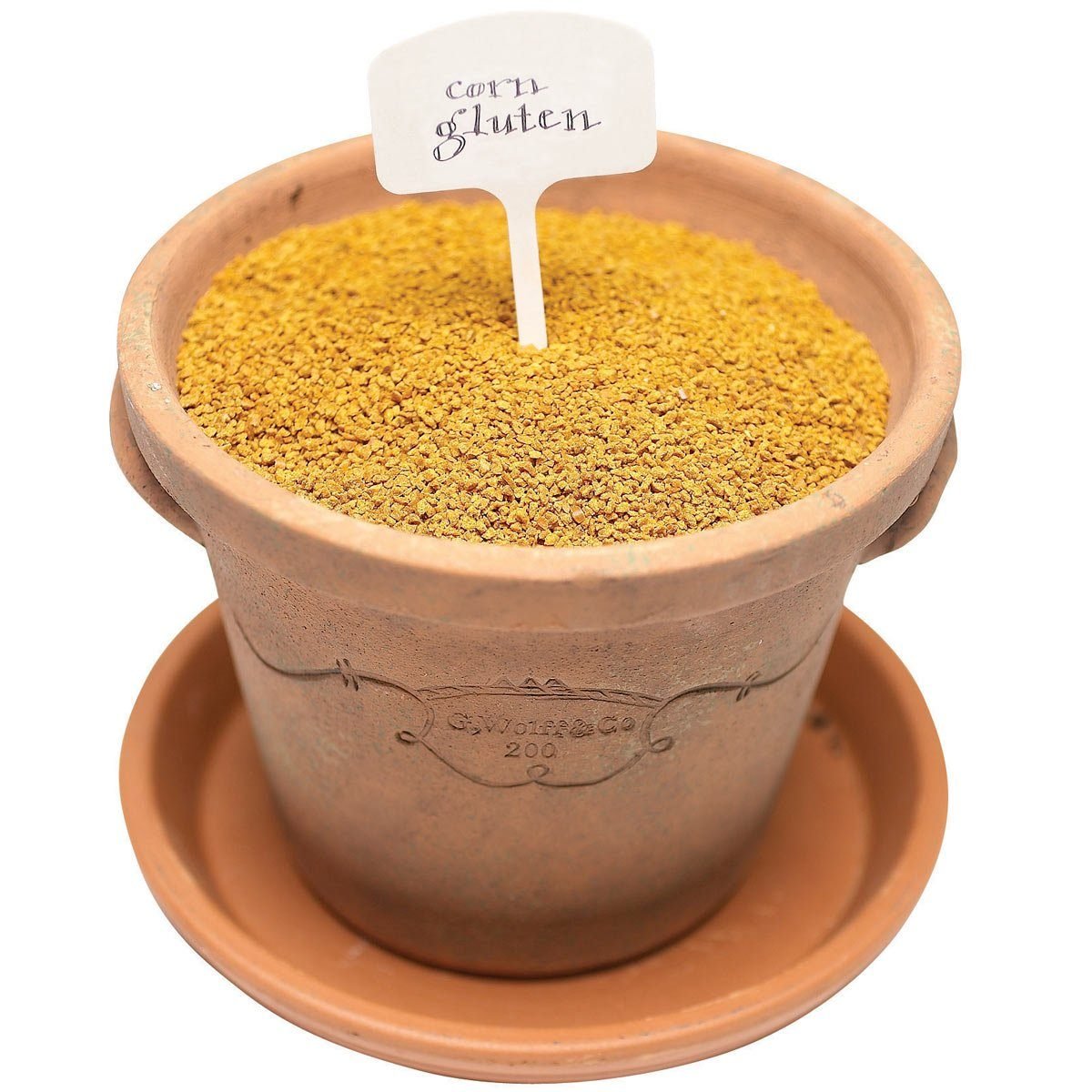
Step 16: Consider chemical-free crabgrass control methods
Pre-emergent herbicides are the most effective and economical way to control crabgrass. But if you’d rather not use herbicides, you can try hand-weeding individual crabgrass plants in late spring before they get too big. They pull easily in the soft ground after a rain.
Corn gluten meal (CGM), a corn byproduct, is another method used to control both crabgrass and broadleaf weeds such as dandelions and clover. It releases a protein that slows the development of weed seedling roots. CGM requires a heavy application rate (20 lbs. per 1,000 sq. ft.), which makes it cumbersome to use and expensive.
Now that you know how to get rid of crabgrass, check out 20 gardening tips that will save you time, money and effort.